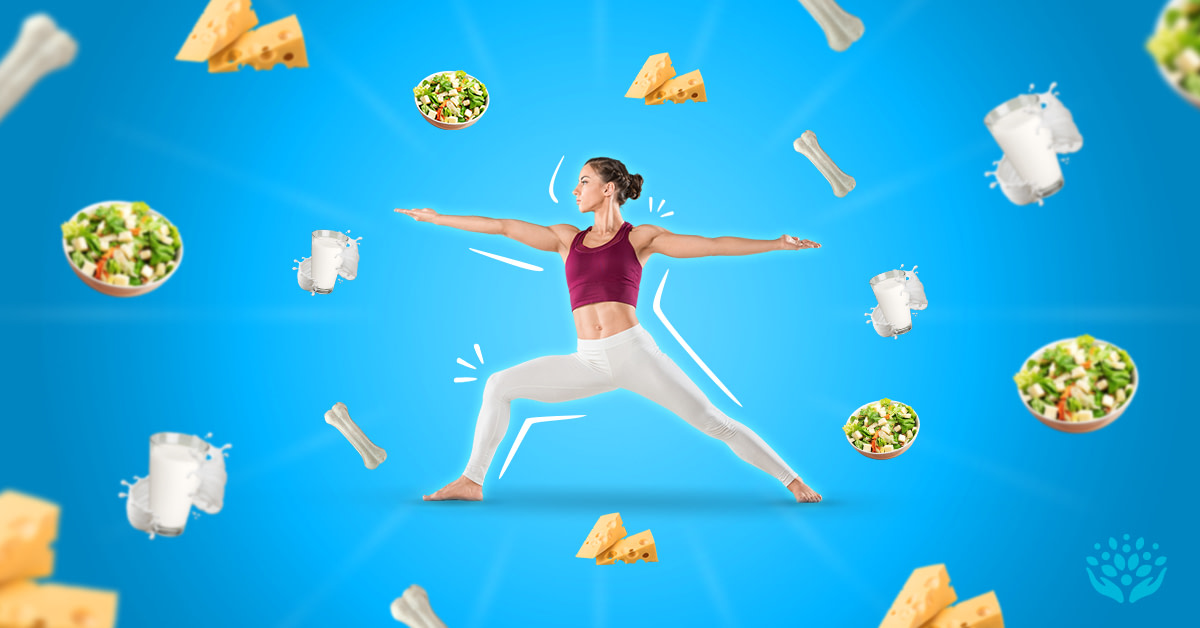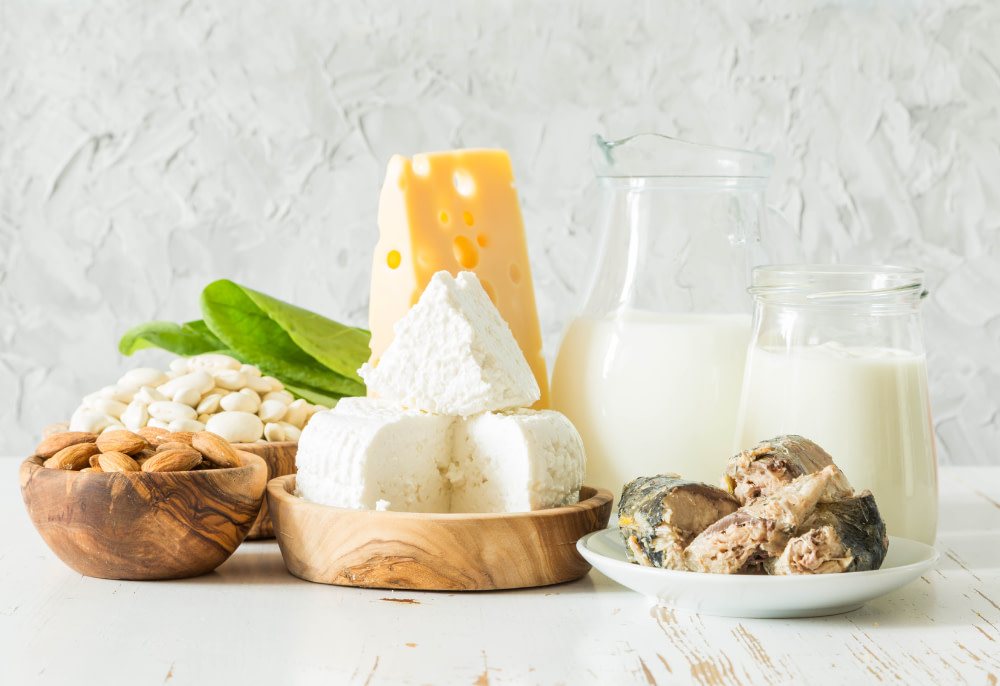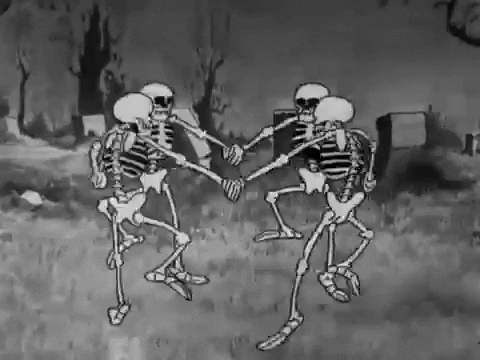
May might be at its end, but National Bone Health and Osteoporosis Month is still going strong, folks!
And for good reason: Without our bones, we’d be nothing more than blobs on the ground. Not cute.

Well, maybe the blob life is a little cute, but it’s not a realistic goal for modern humans. Instead, we’re cemented to a precariously vertical skeleton that requires care and consideration to function properly long-term.
Beefing up your bone health isn’t as simple as chugging milk or popping a calcium hydroxyapatite supplement, either.
The living tissue of the bone matrix demands a smorgasbord of nutrient-dense foods, lifestyle adjustments, and exercises to stave off bone density loss.
Learn More: Calcium Doesn’t Work (Like You Think It Does)
So saddle up, Skeletor! It’s time to take a good, long look at the bone-depleting lifestyle choices you may or may not have been making. Replace those bad-to-the-bone habits with Dr. Neal’s favorite bone-specific wellness practices to get your frame in tip-top shape.
Is it weird that we, your friends at Woodstock Vitamins, are recommending lifestyle changes before supplementation?
Maybe! But within the framework of our whole-picture approach, established by Dr. Neal after 20+ years as a holistic pharmacist, it makes perfect sense.
The foundation of your wellness doesn’t actually lie in the hands of supplement manufacturers, despite what you may have heard on #HealthTok. Your health and well-being are established in the mundane: sleep, diet, exercise, and stress management.
To support your wellness practices with supplements strategically and effectively (read: without wasting money), the groundwork in these lifestyle arenas must be laid and built upon.
Learn More: Wellness Practices 101
We hate to break it to you… But as you age, your bones start to lose density, making them more fragile and prone to breakage.
Don’t despair, though! You can slow down this process by doing weight-bearing exercises that’ll keep you hopping and skipping well into your golden years. Weight-bearing activities, like a hop or skip, create tension that actually triggers your bones to produce more bone tissue.
Essentially, your skeleton feels the impact of your rope-jumping or aerobics and says, “Crap, this sucks, I need to get stronger.”

Learn More: The Truth About Exercise: Ditch the Myths
Still caught up in the calcium controversy?
Many swear by calcium supplements for building bone, and yet in 2018, JAMA released a compelling meta-analysis that totally debunked this mineral myth. To break it down into the simplest terms:
Getting an adequate amount of calcium per day is crucial for the proper functioning of multiple bodily systems, and calcium deficiencies can be near-impossible to spot.
Translation? Up your daily intake of calcium-rich foods and snag a calcium hydroxyapatite supplement if you’re over the age of 30 or at high risk for degenerative bone conditions like osteoporosis.
Learn More: Bone Health: Why We Always Recommend Calcium Hydroxyapatite
We know, this one hurts.
If you want to preserve the integrity of your skeletal system long-term, you’re going to have to get comfortable with being less cool.

Smoking reduces blood flow through your arteries and veins, and subsequently, decreases how much blood reaches your bones — making them weaker and more susceptible to fractures.
Alcohol consumption during the teen years has been shown to reduce peak bone mass and create “relatively weak adult bones.” And for the big kids, things don’t look great either.
Adult consumption of alcohol can disrupt the process of bone tissue remodeling and support bone erosion. Plus, it doesn’t just inhibit your ability to judge your own dance moves — it also inhibits your body’s ability to absorb crucial bone minerals and vitamins:
Skeletal health is no joke — even your funny bone won’t be laughing if you’re bringing your own spare ribs to the next barbecue.
(A humerus pun? Depends who you ask.)
So take a multi-pronged approach to bolster your bones that incorporates food as a medicine, strengthening activities, and a supportive environment. The only thing worse for your bones than smoking is showing up to the build with a skeleton crew.

Calcium-rich foods: Dairy products like cheese are excellent sources of calcium. And don’t worry, lactose-intolerant friends — goat and sheep dairy are also calcium-rich delights.
Other options include aquatic allies like bone-in sardines and salmon, or leafy vegetables like kale and turnip greens. Honorable mentions: nuts, ice cream, orange juice.
Vitamin D sources: Vitamin D helps your body absorb calcium — the two nutrients go together like PB & J. Foods that contain Vitamin D include fatty fish like salmon and tuna, egg yolks, beef liver, oranges, mushrooms, and more.
Magnesium-rich foods: Magnesium is another essential nutrient for bone health — and sleep, stress management, muscle performance, etc. — making it an OG metal.
Good sources include nuts, seeds, legumes, and whole grains.
Soda: Sorry to burst your fizzy bubble, but soda is no friend to your bones. It contains phosphoric acid, which can interfere with calcium absorption and lead to bone loss over time.
Caffeine Overload: Coffee lovers, don’t worry, we’re not asking you to give up your beloved beverage entirely. Just remember that excessive caffeine can mess with calcium absorption. So, maybe consider swapping that fifth cup of joe for a calcium-rich snack.
Excessive Salt: Salt may bring flavor to your meals, but too much of it can lead to calcium loss. So, sprinkle it lightly and choose high-quality options from seasoned suppliers.
Are you sitting down right now? If you are, you may want to stand up for this. When it comes to bone health, curling up on the couch won’t cut it. It’s time to get up and get moving!
Physical activity and stretching work together like a well-oiled machine to keep your bones healthy and strong. Stretching might seem like a chore, but it’s actually doing wonders for your bones.
So, the next time you’re feeling a bit tight, just think of it as an opportunity to give your bones some love.
Building and maintaining healthy bones isn’t only about nutrition and exercise — your external milieu plays a role as well.
Wait, what? Simple changes to your home and work environment can help prevent falls and reduce withdraws from the bone bank? Yes, yes they can.

If you spend a lot of time sitting at a desk or engaging in other sedentary work, paying attention to workplace ergonomics is important. This means setting up your working area in a way that promotes good posture and reduces strain on your bones and joints.
Preventing falls is one of the most important things you can do to maintain good bone health. In addition to the home modifications mentioned above, some other fall prevention strategies to consider include:
Are you chilled to the bone recalling all the bone-depleting activities you’ve engaged in through the years? Overwhelmed by this bone-anza of skeletal information? Got a bone to pick with us?
Hop and skip on over to a Counterside Consult — we’ll make no bones about offering personalized, strategic supplement guidance for getting your skeleton the TLC it needs.

Shop the Vital 5
Peek behind the curtain of supplement industry misinformation and enjoy special promotions, podcast episodes, and our No-BS approach to holistic care, sent weekly.

We built the model for finding supplements that work for your wellness, your wallet, and the world. Learn More
Peek behind the curtain of supplement industry misinformation and enjoy special promotions, podcast episodes, and our No-BS approach to holistic care, sent weekly.

We built the model for finding supplements that work for your wellness, your wallet, and the world. Learn More
These statements have not been evaluated by the Food and Drug Administration. This product is not intended to diagnose, treat, cure or prevent any disease.
Use only as directed. Consult your healthcare provider before using supplements or providing supplements to children under the age of 18. The information provided hereinis intended for your general knowledge only and is not intended to be, nor is it, medical advice or a substitute for medical advice. If you have or suspect you have a specific medical condition or disease, please consult your healthcare provider.

By clicking “Accept”, you agree to the use of cookies on your device in accordance with our Privacy and Cookie policies